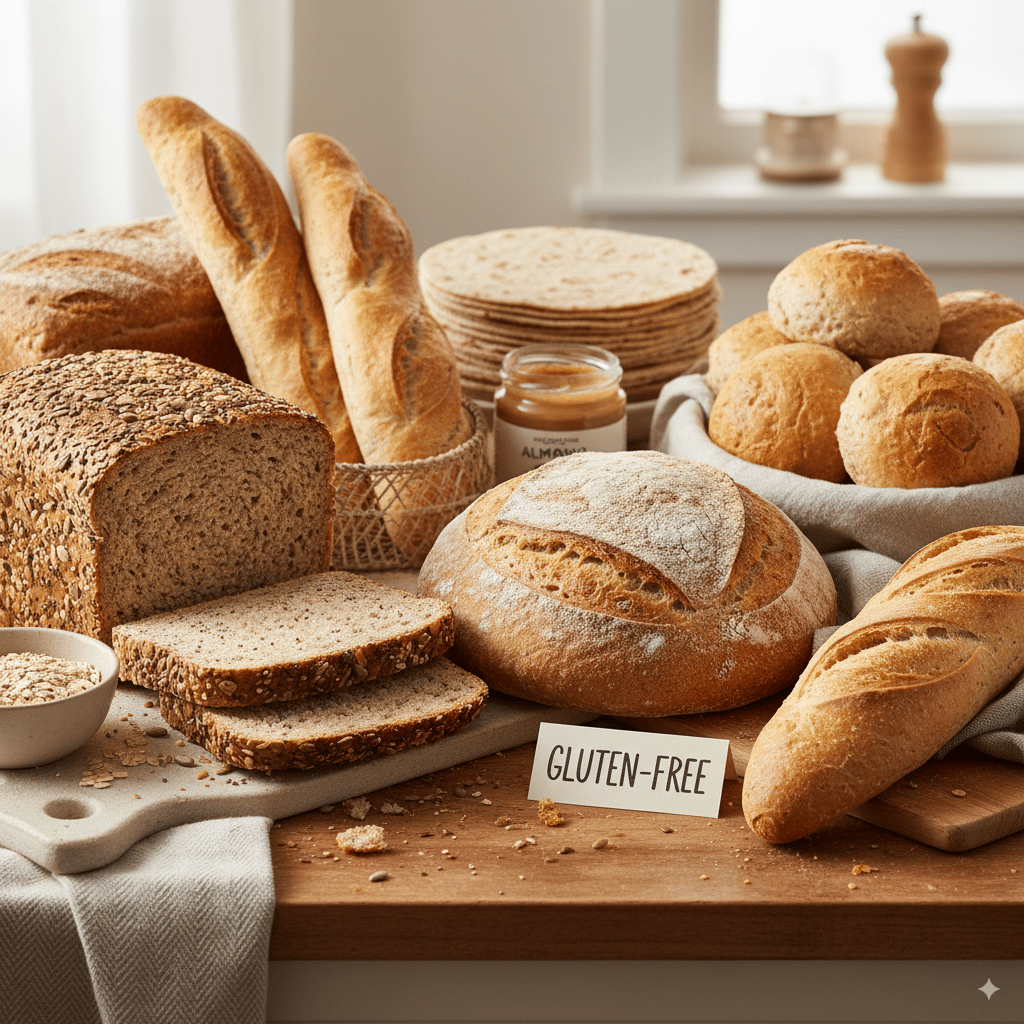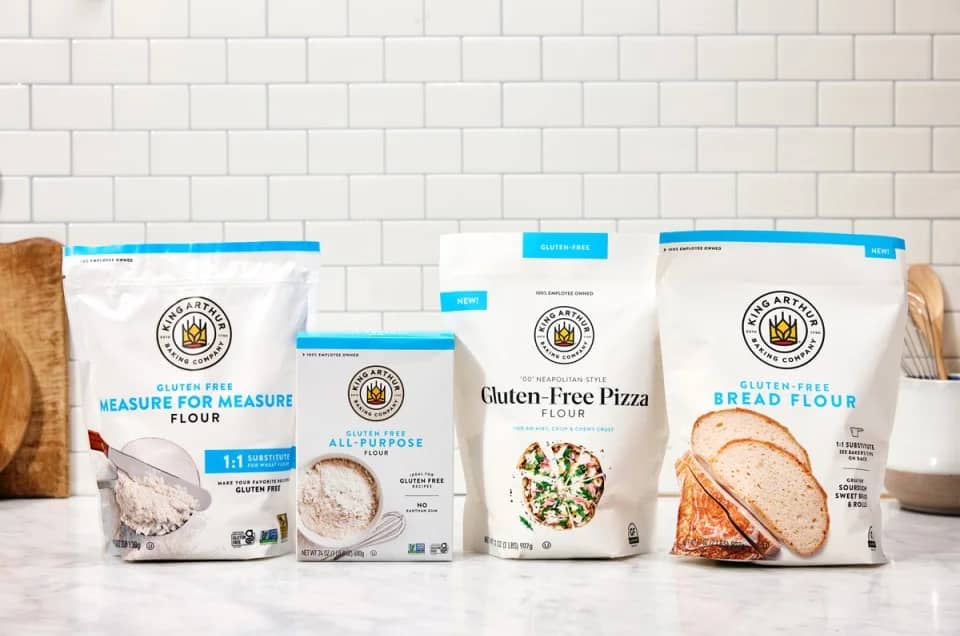|
Good morning. We need to talk about the number one reason your gluten-free baked goods keep turning into hockey pucks. Coconut flour might seem like a simple swap for regular flour, but treating it that way is a recipe for disaster—literally. Whether you're navigating celiac disease, managing multiple food allergies, or just trying to expand your baking repertoire, understanding this one crucial mistake will transform your results.
In today's newsletter:
- The Coconut Flour Mistake Everyone Makes: Why your recipes fail and the simple ratios that actually work
- Science Corner: The fascinating reason coconut flour behaves nothing like other flours (hint: it's 60% fiber)
- Weekly Crossword
Still wasting hours searching for gluten-free recipes that actually work?
Our Recipe Fast Pass gives you instant access to ALL of our gluten-free recipes — tested, perfected, and guaranteed to turn out right the first time.
✅ No more random Pinterest flops
✅ No weird ingredients you’ll never use again
✅ Every recipe tested and rated by real gluten-free bakers
These are the same recipes 300+ bakers rely on to bake confidently without endless trial and error.
Get the Recipe Fast Pass for $87, and skip straight to the recipes that never fail.
|
|
|
Baking Spotlight
Check out this genius trick that helps organize your cooking utensils while taking advantage of storage space you might not even realize you had. The best part? Its easy and affordable!
|
A MESSAGE FROM BAKINGSUBS
Sharing Our Favorite Newsletters With You!
Today we're excited to share some of our favorite newsletters that we like to follow. If you're interested in fun recipes, baking tips, and more, please give these creators a follow!
|
|
This Old Baker
I'm a blogger, home baker, and entrepreneur who loves to talk about recipes, home, hacks and how to stretch that paycheck. Subscribe to my newsletter. |
|
Freaking Delish
Food Blogger & Summit Host
Dinner at home... without the chaos? Yes, please. I help busy moms skip the drive-thru and get real food on the table fast — even when it’s 5:15, nobody’s started dinner, and everyone’s hangry. 👇 Grab my 5 No-Cook Rush Hour Recipes — your secret weapon for stress-free weeknights. |
|
The Sourdough Slice by Everyday Homemade
Serving up easy sourdough recipes, stories, and inspiration every Saturday morning.
Join me in the kitchen! I’m Ashley—a sourdough-loving food blogger sharing simple, cozy recipes in The Sourdough Slice, my Saturday morning newsletter. From easy discard bakes to beginner-friendly loaves, you’ll find sourdough recipes you’ll want to make again and again. |
The Coconut Flour Mistake That Ruins Everything
We've all been there. You find a recipe you love, swap in coconut flour to make it gluten-free, and end up with something that tastes like sweetened sawdust. Here's what nobody tells you upfront: coconut flour is nothing like regular flour, and treating it that way guarantees disaster. While almond flour can often substitute one-for-one with wheat flour, coconut flour demands only a quarter to a third of the amount. Use a full cup of coconut flour where the recipe calls for a cup of regular flour, and you'll create an inedible brick.
Why This Flour Acts So Strange
The science behind coconut flour's behavior is actually fascinating. This stuff is 60% dietary fiber—compare that to wheat flour's measly 3%—which means it absorbs liquid like nothing else in your pantry. We're talking about four to five times its weight in liquid. It's essentially a sponge in powder form. When you add that extreme absorbency to the fact that coconut flour contains zero gluten (the protein that normally holds baked goods together), you start to understand why standard baking rules go out the window. Without gluten's structural support, coconut flour desperately needs eggs—lots of them—to provide the protein network that keeps everything from crumbling apart.
The Rules That Actually Work
After testing countless coconut flour disasters ourselves, we've learned the non-negotiable rules. First, use only one-quarter cup of coconut flour for every cup of regular flour the original recipe requires. Second, add one egg for every quarter cup of coconut flour you use—yes, that means six eggs per cup of coconut flour, which sounds insane but works. Third, and this is crucial, let your batter rest for five to ten minutes after mixing. Coconut flour continues absorbing moisture during this time, and what looks too thick initially becomes perfect with patience. The batter should look wrong to you—thick as porridge rather than pourable—but trust the process.
When Eggs Aren't an Option
For our egg-free bakers, we need to be honest: coconut flour becomes exponentially harder to work with. Those flax and chia egg substitutes that work beautifully in other gluten-free baking? They create gummy, jelly-like textures when paired with coconut flour. The most successful approach isn't trying to replace six eggs with six flax eggs—it's using coconut flour as just 20-25% of your total flour blend. Combine it with gluten-free all-purpose flour or other alternatives, use mashed banana for moisture and binding, and accept that your results will be denser and more cake-like than traditional versions. Some recipes simply can't be made egg-free with coconut flour, and that's okay.
Starting Simple
If you're new to coconut flour, start with pancakes—they're nearly impossible to mess up and need just a quarter cup of flour with four eggs and some milk. Once you've mastered the thick batter consistency and seen how coconut flour behaves, move on to muffins and quick breads where extra moisture is your friend. Save cookies and yeast breads for later, or skip them entirely in favor of recipes where coconut flour shines. Remember, this isn't a difficult ingredient once you understand its quirks—it's just completely different from every other flour you've used. Respect those differences, and you'll discover coconut flour can create some genuinely delicious baked goods that happen to fit multiple dietary needs.
|
Articles From This Week

Best Tasting Gluten Free Bread: 15 Brands Ranked & Reviewed
Which gluten-free bread tastes best? We tested 15 top brands, including Canyon Bakehouse, Schar, and Udi's. See our complete taste test rankings!
Continue reading →
|
|

King Arthur Flour Gluten Free: Complete Product Line Review
Complete review of King Arthur's gluten-free flour line from a baker's perspective. Real results, tips, and honest comparisons for celiac-safe baking.
Continue reading →
|
Check Out This Week's Crossword
|
When you're ready, here's how we can help:
See You in the Next One!
Have a substitution you want us to cover? Have you seen any amazing recipes that use substitutions recently? Send them all our way, and we might include them in an upcoming newsletter!
✌️
|
| How did you like today's newsletter? |
|
|
|
|
|
|
|